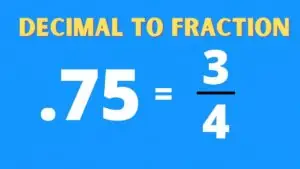In the realm of geometry and mathematics, rotations play a fundamental role in understanding the motion of objects around a center or an axis. A rotation is a type of transformation that involves circular movement, and it has various applications in both two-dimensional and three-dimensional spaces. In this guide, we will explore the concept of rotations in math, including their definition, formulas, rotational symmetry, and real-life examples.

✅ AI Essay Writer ✅ AI Detector ✅ Plagchecker ✅ Paraphraser
✅ Summarizer ✅ Citation Generator
Definition of Rotations in Geometry
Rotation, in the context of geometry, refers to the circular motion of an object around a center point or an axis. Mathematically, a rotation is described as a mapping that preserves the distances between points, making it a rigid transformation. The set of all rotations around a fixed point forms what is known as the rotation group of a unique space.
Rotation Formula and Rules
Rotations can be performed in both clockwise and counterclockwise directions. The most common rotation angles are 90°, 180°, and 270°. Each type of rotation follows specific rules in the coordinate plane, as shown below:
- Rotation of 90° (Clockwise):
- Point on the Image: (x, y)
- Point on the Image after Rotation: (y, -x)
- Rotation of 90° (Counter Clockwise):
- Point on the Image: (x, y)
- Point on the Image after Rotation: (-y, x)
- Rotation of 180° (Both Clockwise and Counterclockwise):
- Point on the Image: (x, y)
- Point on the Image after Rotation: (-x, -y)
- Rotation of 270° (Clockwise):
- Point on the Image: (x, y)
- Point on the Image after Rotation: (-y, x)
- Rotation of 270° (Counter Clockwise):
- Point on the Image: (x, y)
- Point on the Image after Rotation: (y, -x)
The rotation can be visualized as an object turning around a fixed point by the specified angle.
Rotational Symmetry
In geometry, rotational symmetry refers to the property that certain shapes maintain their appearance after a rotation of a certain angle around their center. Regular polygons, such as circles, squares, and rectangles, exhibit rotational symmetry. To determine the rotational symmetry of a shape, we need to find the order of symmetry, which is the number of times the figure coincides with itself during a full rotation of 360°.
For example, let’s consider a rectangle. When the rectangle is rotated 90°, it appears exactly as before the rotation. Rotating it twice (180°) or four times (360°) also yields the same appearance. Therefore, the order of rotational symmetry for the rectangle is 2.
Real-Life Examples of Rotations
Rotations are not limited to theoretical applications; they are prevalent in real-life scenarios as well. Here are some examples:
- Ceiling Fan Motion: Observe the motion of a ceiling fan. The blades of the fan rotate around a central axis, generating a cooling breeze in the room.
- Door Movement: Consider the movement of a door on its hinges. When you open or close the door, it rotates around the hinges, serving as an everyday example of a rotation.
- Earth’s Rotation: One of the most significant examples of rotation is the Earth’s rotation around its axis. This rotation causes the day and night cycle, giving us the perception of the sun rising in the east and setting in the west.
- Globe Rotation: Picture a globe or a map of the Earth. When you spin the globe on its axis, it demonstrates the concept of rotation in geography.
- Circular Motion: Think about a group of people holding hands and forming a circle. As they move together in a clockwise or counterclockwise direction, they are exhibiting rotational motion.
Conclusion
In conclusion, rotations in math and geometry are essential concepts that involve the circular motion of an object around a center or an axis. Through the application of rotation formulas and rules, we can perform rotations in both two-dimensional and three-dimensional spaces. Understanding rotational symmetry helps us identify shapes that maintain their appearance after a certain degree of rotation. Additionally, real-life examples of rotations, such as the motion of a ceiling fan or the Earth’s rotation, demonstrate the practical significance of this mathematical concept. By grasping the fundamentals of rotations, we can further appreciate the intricate patterns and motions that surround us in the world of mathematics.
FAQ
Can you explain rotational symmetry in math?
Rotational symmetry in math refers to the property of certain shapes that maintain their appearance after a rotation of a specific angle around their center. Shapes with rotational symmetry look the same at regular intervals during a full 360° rotation. Regular polygons, such as circles, squares, and triangles, exhibit rotational symmetry. To determine the rotational symmetry of a shape, we find the order of symmetry, which is the number of times the figure coincides with itself during a full rotation.
What are the principal rotations around X, Y, and Z axes?
The principal rotations are specific rotations performed around the X, Y, and Z axes in three-dimensional space. These rotations are fundamental and form the basis for other rotations.
- Rotation around the X-axis is called the “Roll.”
- Rotation around the Y-axis is called the “Pitch.”
- Rotation around the Z-axis is called the “Yaw.”
How can we perform a 90° clockwise rotation in the coordinate plane?
To perform a 90° clockwise rotation in the coordinate plane, follow these steps:
- Switch the x and y coordinates of the point.
- Negate the new x-coordinate.
For a point (x, y), its coordinates after a 90° clockwise rotation become (y, -x).
What are the common rotation angles used in math?
In math, the most common rotation angles are 90°, 180°, and 270°. These angles represent quarter-turn, half-turn, and three-quarter-turn rotations, respectively. Additionally, rotations can occur at any angle, and they can be performed in both clockwise and counterclockwise directions.
How do we represent rotation using a rotation matrix?
In a two-dimensional cartesian coordinate plane, a rotation matrix is used to perform a rotation. The rotation matrix, denoted as R, rotates points counterclockwise through an angle θ about the origin. The rotation matrix is given by:
[ cos(θ) -sin(θ) ] [ sin(θ) cos(θ) ]
To perform the rotation operation, the coordinates of each point in the plane are represented as a column vector “v”, and the rotated vector can be obtained by matrix multiplication Rv.
Which geometric shapes have rotational symmetry?
Many geometric shapes have rotational symmetry. Some examples include:
- Circles
- Squares
- Regular polygons, such as equilateral triangles and regular hexagons
These shapes can be rotated by a certain angle around their center point, and they will still look the same.
How do we find the order of symmetry for a given figure?
To find the order of symmetry for a given figure, rotate the shape in a full circle (360°) and count the number of times it coincides with itself. The order of symmetry is the number of positions at which the figure looks identical during this full rotation. For example, if a shape looks the same after a 90° rotation and again after a 270° rotation, it has an order of symmetry of 4.
Follow us on Reddit for more insights and updates.





Comments (0)
Welcome to A*Help comments!
We’re all about debate and discussion at A*Help.
We value the diverse opinions of users, so you may find points of view that you don’t agree with. And that’s cool. However, there are certain things we’re not OK with: attempts to manipulate our data in any way, for example, or the posting of discriminative, offensive, hateful, or disparaging material.